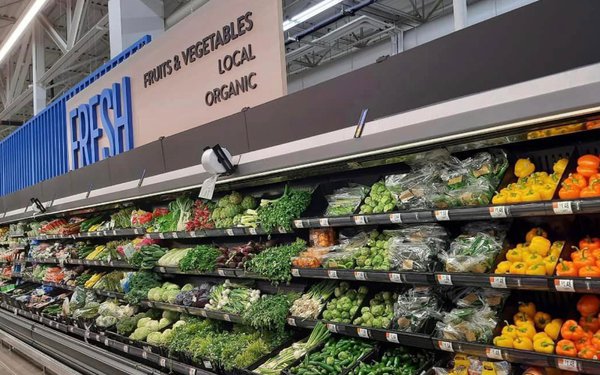
The nation’s largest grocers are bracing for a disruption that will reach far beyond sales figures. The U.S. Department of Agriculture says it will suspend
payments for the Supplemental Nutrition Assistance Program starting Nov. 1, halting roughly $8 billion in monthly food aid for 41 million low-income Americans.
For households that already struggle to stretch benefits through the month, the cutoff couldn’t come at a worse time. A new report from Numerator finds that 75% of SNAP
recipients run out of benefits before month’s end. The research, based on more than 31,000 verified SNAP households, shows these shoppers spend about $832 per month on groceries—20% more
than non-SNAP shoppers—and visit a wider range of stores in search of deals. Nearly 94% shop at Walmart, where they spend an average of $2,653 a year.
advertisement
advertisement
“Walmart alone accounts for almost one quarter of SNAP spending (about $25 billion), and SNAP spending accounts for more than 8% of their grocery sales,” economist Ismael
Martinez of the Economic Policy Institute told Newsweek.
For SNAP recipients, the impact will extend beyond grocery
purchases, said Katherine Black, partner at Kearney, in an email to Marketing Daily. “SNAP households will be pulling back on discretionary spending
and trying to balance feeding their family and giving their families a special holiday. What’s more, this will strike at consumer confidence across the board, and that will impact just about
everyone—from retailers and brands to investors.”
Even as some states scramble to cover the shortfall, the pain will likely be felt most by
retailers that serve lower-income shoppers. “If SNAP payments fail to go out, it will crimp spending by the lowest-income groups,” said Neil Saunders, managing director of GlobalData.
“While not all of this finds its way directly into the pockets of retailers, it’s a helpful shot in the arm for the consumer economy. Without that boost, there will likely be a moderation
in overall spend.”
The ripples threaten to disrupt the grocery universe. Food inflation is already squeezing household budgets: the index for food at
home rose 2.7% over the 12 months ending in September, reports Progressive Grocer. Meats, poultry, fish and eggs climbed 5.2%.
“Food assistance programs make sure that millions of families can put food on the table each month,” Milton Jones, president of the United Food and Commercial Workers
International Union, told Progressive Grocer. “It’s not only helpful for families in need—it’s also an economic multiplier. Our entire food system, including grocery
workers, meatpackers and food processors, benefits when SNAP families can buy groceries.”
“Even a brief interruption could lead to layoffs or
other painful adjustments in this sector,” Martinez told Newsweek. “But the deeper issue is human: families, children, seniors and veterans who
suddenly can’t afford food.”
Black said brands and retailers should meet this moment with empathy, not just strategy. “Consumers use a range
of tactics—switching to cash, buying on sale or moving to lower-priced retailers,” she said. “Brands that want to build long-term loyalty should keep pricing sharp and make special
offers that empathize with these consumers.”